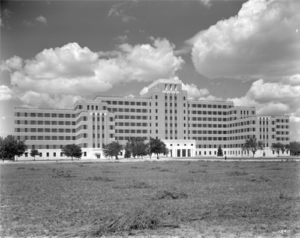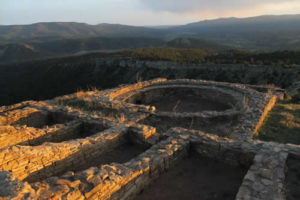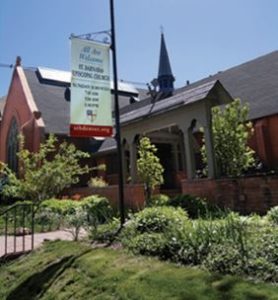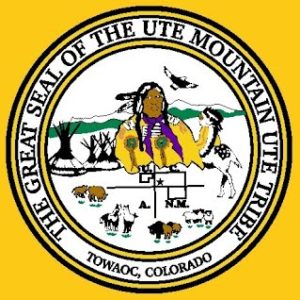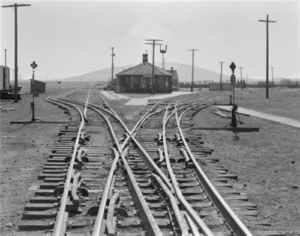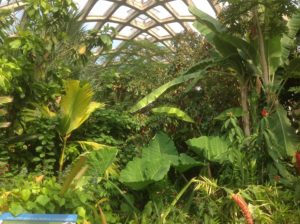Grant News
Preserving Colorado (part 2)
State Historical Fund second round grants for 2016
Each year, the History Colorado State Historical Fund (SHF) provides grants for preservation projects. In 2016, we approved a diverse array of preservation grants—everything from restoration and rehabilitation of historic buildings, architectural assessments, archaeological excavations, designation and interpretation of historic places, preservation planning studies, and education and training programs. These are grants from our second round in 2016, and represent some of the great preservation work being done around Colorado.
Anschutz Medical Campus restoring historic Building 500
ID # 16-02-014
Aurora
Fitzsimons General Hospital Main Building No. 500
Grant Applicant Organization(s): Anshutz Medical Campus University of Colorado Denver
Total Grant Amount: $200,000
Building 500 of the Anschutz Medical Campus in Aurora is now the center of administration and education for the campus. But it was once a U.S. Army hospital—and a historic one at that. Commissioned in the days following the attack on Pearl Harbor, the hospital has treated soldiers, sailors, airmen, and Marines who served in World War II, Korea, Vietnam, the Gulf War, and other conflicts. When President Dwight D. Eisenhower suffered a heart attack while visiting family in Denver, he was treated at Fitzsimons General Hospital—what is now known as Building 500. With a grant from SHF, Anschutz Medical Campus administration is restoring and rehabilitating seven original double-hung windows on the ground floor, and 42 original wooden windows in the southeastern wing. With a focus on rehabilitation of the windows rather than replacement, this project will help preserve the historical character and legacy of the building, which continues to be of great value to the community.
San Juan Mountains Association conducting ethnographic research project
ID # 16-02-018
Pagosa Springs
Chimney Rock National Monument
Grant Applicant Organization(s): San Juan Mountains Association
Total Grant Amount: $178,391
The Chimney Rock National Monument at the southern edge of the San Juan Mountains holds deep historical and cultural significance for the people of Colorado. Over a millennium ago, it functioned as a celestial observatory for Ancestral Puebloans. There are still extensive remains of ancient houses and structures built by the Pueblo peoples. The San Juan Mountains Association is using a SHF grant to conduct an ethnographic research project of 17 Native American tribes with historic connections to the area. The project will document the tribes’ knowledge, stories, and oral histories concerning Chimney Rock. The project will incorporate this traditional knowledge and history into the interpretation and management of Chimney Rock—preserving the voices of the people who maintain cultural and traditional ties to the monument.
Service-focused St. Barnabas Parish restoring windows of historic Marshall House
ID # 16-02-020
Denver
Christ Church Mission
Grant Applicant Organization(s): St. Barnabas Parish
Total Grant Amount: $73,550
Since its founding in a storefront shop on Colfax and Josephine in
1890, St. Barnabas Parish has served Denver’s Capitol Hill neighborhood. The congregation prides itself on being open and welcoming, and has an impressive history of active outreach and ministry in Denver.
The church founded Sewall House in 1944 to serve those afflicted with polio, cerebral palsy, and other disabilities; was an original kitchen for Project Angel Heart which delivers home-cooked meals to people living with life-changing illness; supported St. George’s Clinic in Baghdad; serves as a shelter for the Women’s Homelessness Initiative; and continues as a site for The Sharing Table, an organization dedicated to alleviating hunger, supporting the growth and development of children, and advocating for homeless families in the area. With this grant from SHF, the Parish will rehabilitate the original steel casement windows of their historic Marshall House. They will also replace the hardware for operating and locking the windows and install new interior storm windows, which will increase energy efficiency and the comfort of the Parish’s guests—including those they serve—while preserving the historical appearance and character of the building.
Ute Mountain Ute Tribal Historic Preservation Office mapping and conducting preservation assessment of Tribal Park
ID # 16-02-022
Cortez
Ute Mountain Tribal Park
Grant Applicant Organization(s): Ute Mountain Ute Tribe
Total Grant Amount: $149,753
The Ute Mountain Ute Tribe oversees the Ute Mountain Tribal Park, which is home to numerous cave dwellings, pre-Hispanic village sites, and other areas of archaeological interest. Since forming the state’s first Tribal Historic Preservation Office, the tribe has continued its work to preserve and maintain the archaeological and historical resource that the Tribal Park represents. Utilizing a significant SHF grant, the Tribe will oversee a large-scale mapping and preservation assessment in the Tribal Park. Many sites and artifacts may be threatened by natural weather, construction and maintenance projects, theft, and visits from tourists. The grant will be used to update the documentation, analysis, and maps of multiple sites of historic and archaeological significance to assist in preservation efforts. Baseline data such as noting the areas of disturbance, identifying exposed architectural elements, and surface artifact counts will be collected. Unmanned Aerial Vehicles will be employed to help produce accurate 3-D models of each site, with the hope that these models might be viewed within the Ute Museum or even online. Through the SHF grant, the Ute Mountain Ute Tribe are using advanced technology to help preserve their past.
Town of Antonito preserving historic Denver & Rio Grande Depot
ID # 16-02-023
Antonito
Denver & Rio Grande Antonito Depot
Grant Applicant Organization(s): Town of Antonito
Total Grant Amount: $128,694
Antonito owes its existence to the expansion of the Denver & Rio
Grande Railroad. In 1879, the company began extending the track south and purchased the land that would become the San Antonio Junction—and Antonito was the community that sprang up around it.
The Denver & Rio Grande Antonito Depot serviced freight and passengers alike headed to Santa Fe, Durango, Silverton, and New Mexico. The Town of Antonito purchased the depot from Union Pacific in 2006, and has taken steps to preserve the building. This most recent SHF grant will enable the Town to restore and rehabilitate several of the depot’s character-defining features, including the windows, doors, chimney, roof, and other elements in need of care.
Denver Botanic Gardens restoring Boettcher Conservatory windows and concrete
ID # 16-02-025
Denver
Boettcher Memorial Conservatory
Grant Applicant Organization(s): Denver Botanic Gardens
Total Grant Amount: $200,000
Dedicated in 1966 and declared a city and county landmark the following decade, the Boettcher Conservatory at the Denver Botanic Gardens has been a Colorado architectural treasure since its construction. It’s easy to see why. Sporting a unique mid-century modern design, it features crossed “ribs” of concrete run between diamond-shaped Plexiglass windows. It remains the only conservatory in the nation built from cast-in-place concrete. The conservatory is home to over 600 species and varieties of tropical plants, and features waterfalls, pools, and even some ducks (who are permanent residents). While keeping the conservatory open to the public, the Denver Botanic Gardens has continually worked to preserve the original look, design, and integrity of its unique centerpiece. With help from a recent grant from SHF, the Denver Botanic Gardens will plan for and proceed with restoration, sealing, and waterproofing of the existing concrete, and assess and repair the damage caused to the Plexigass windows after years of exposure to the elements. This work will help ensure that the Conservatory will be preserved so that it will remain an architectural centerpiece for the Gardens, the city of Denver, and the people of Colorado.

